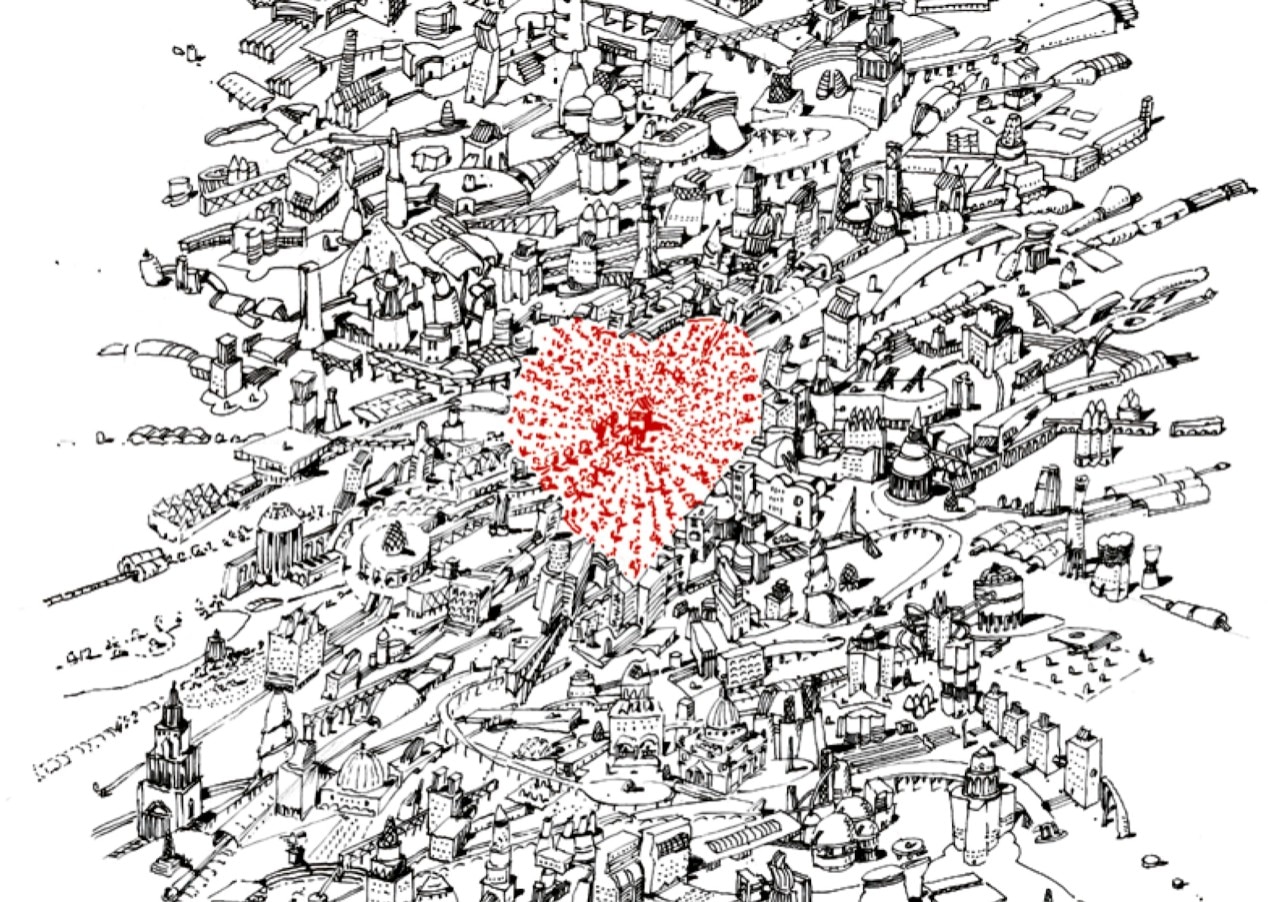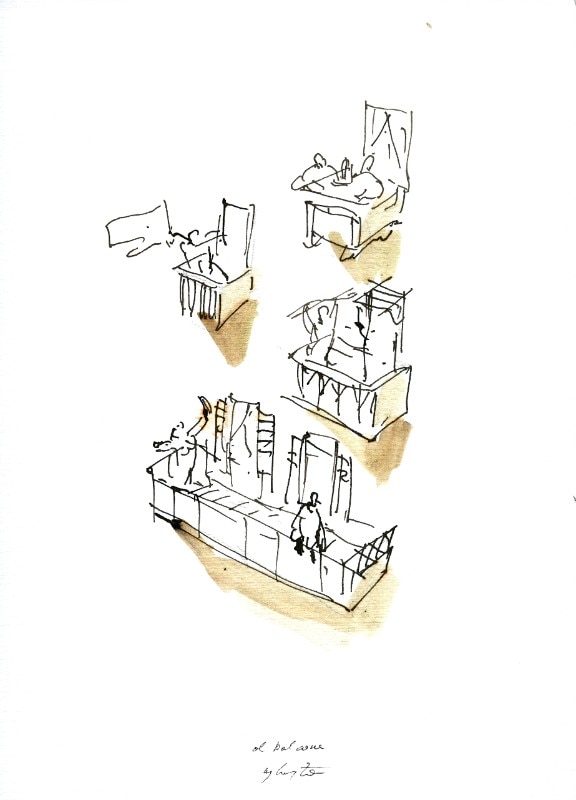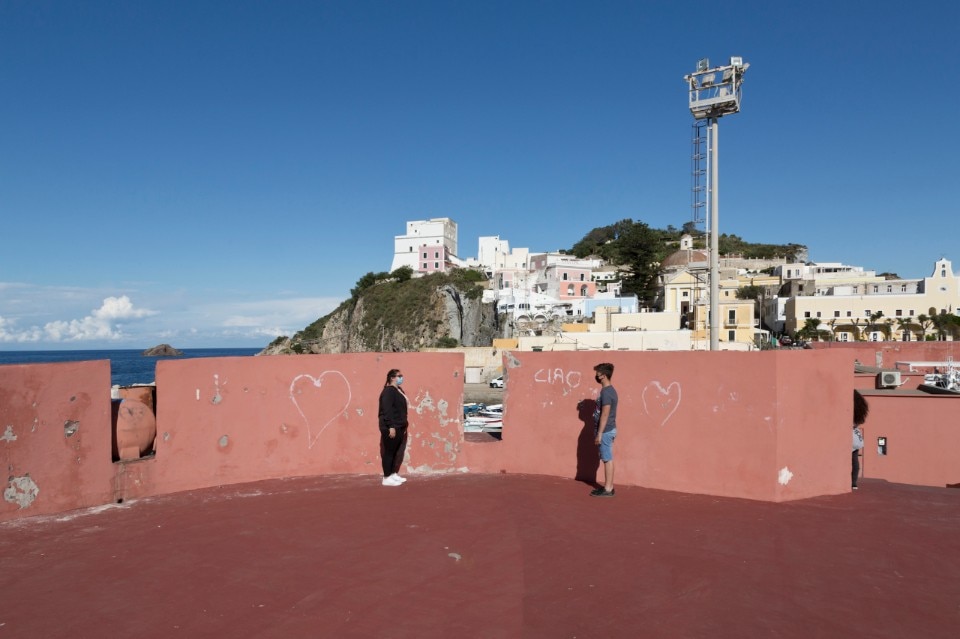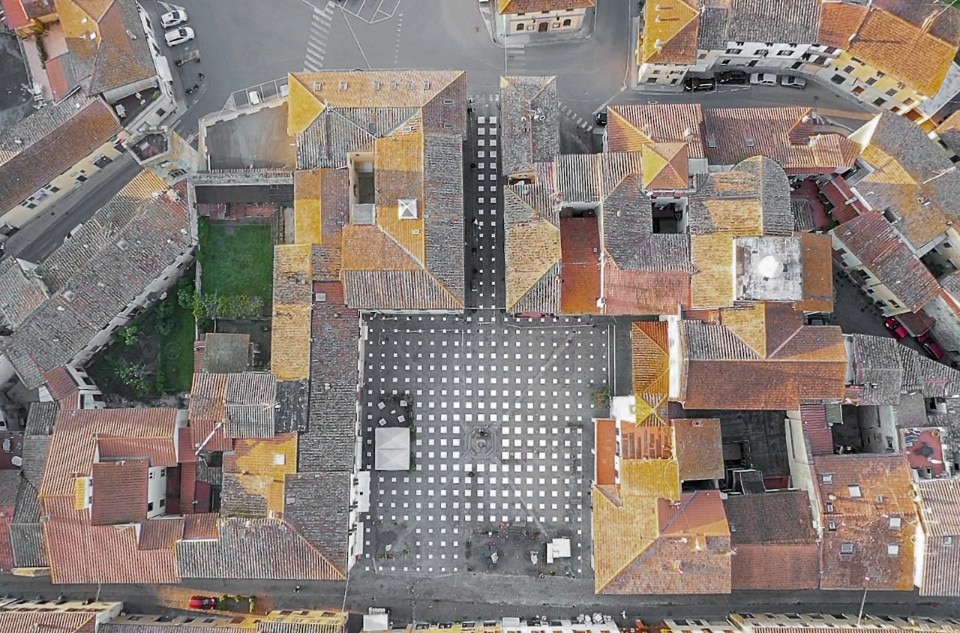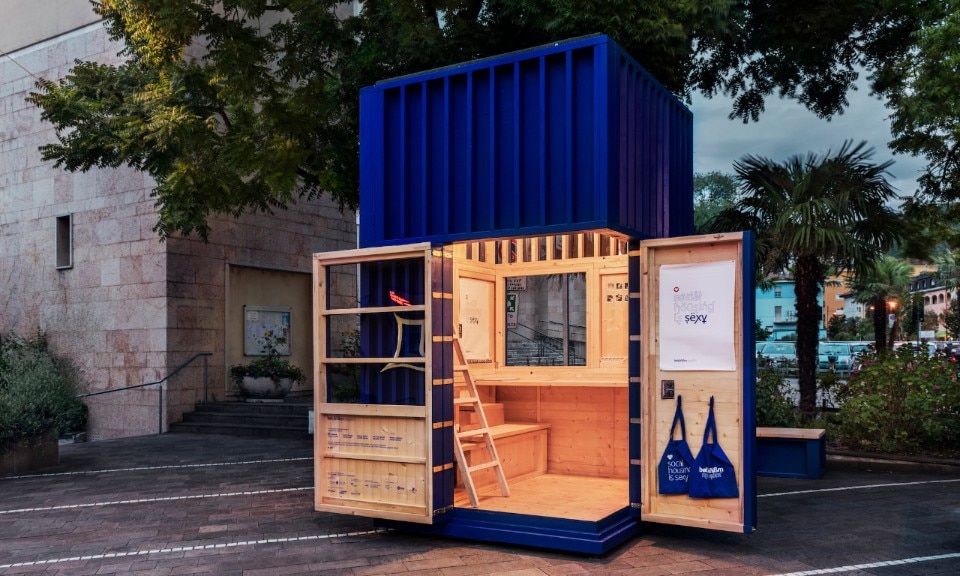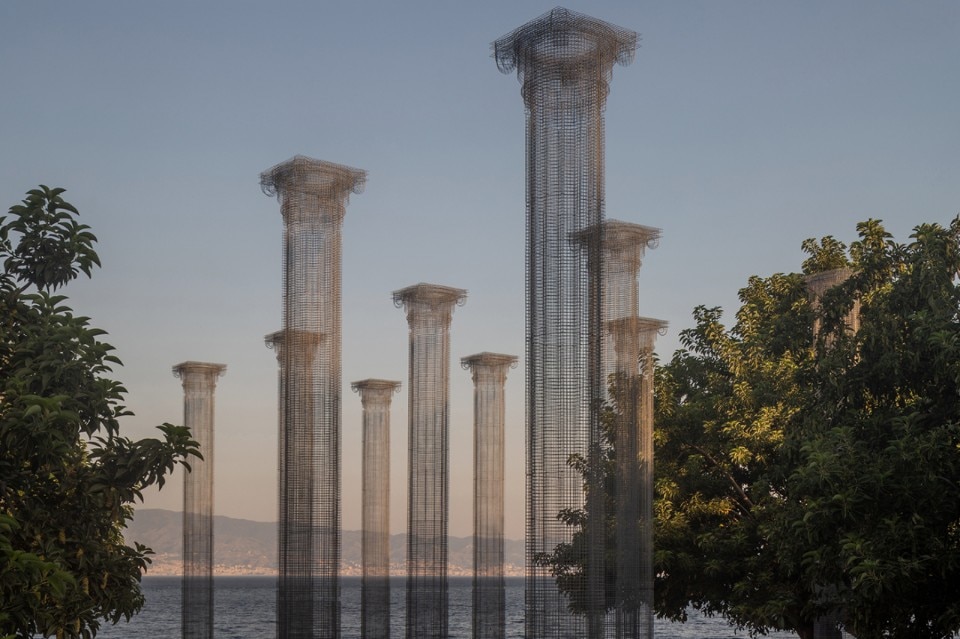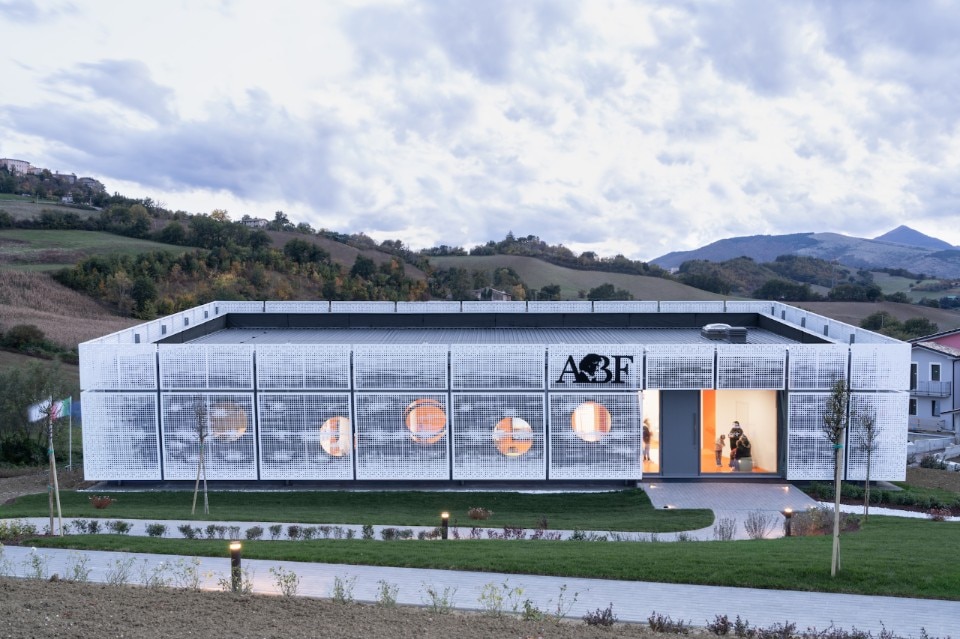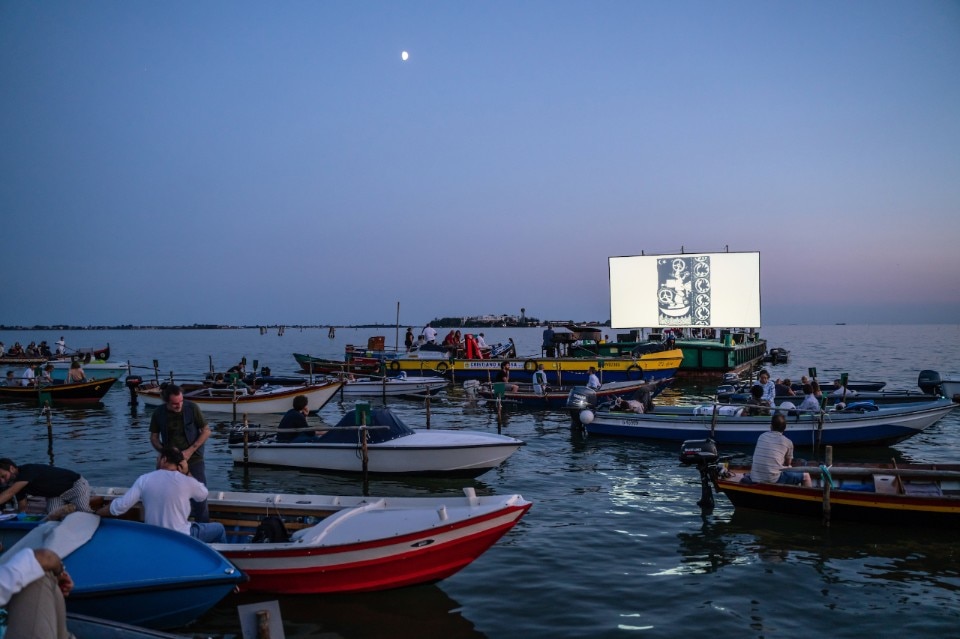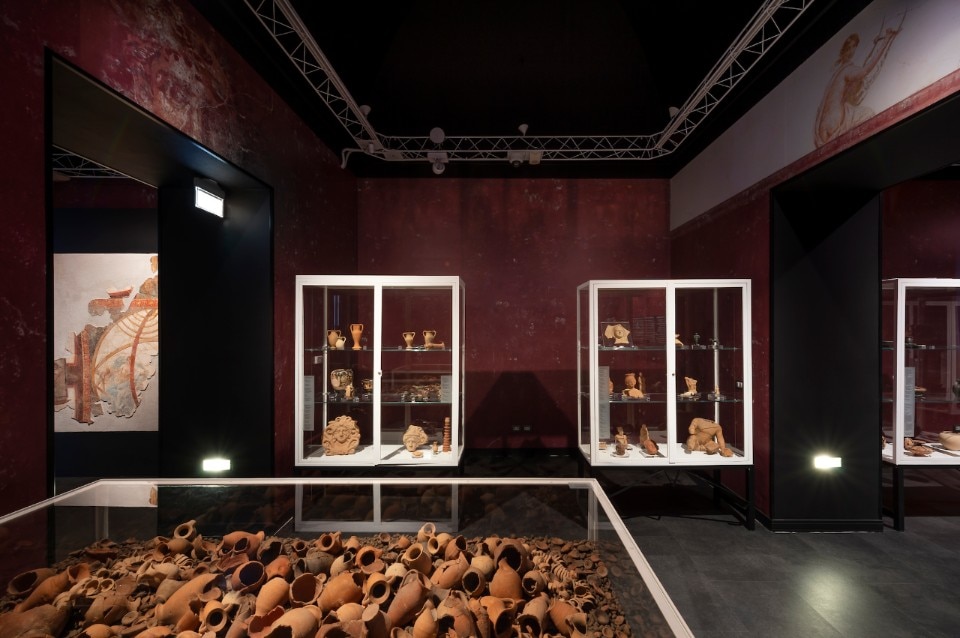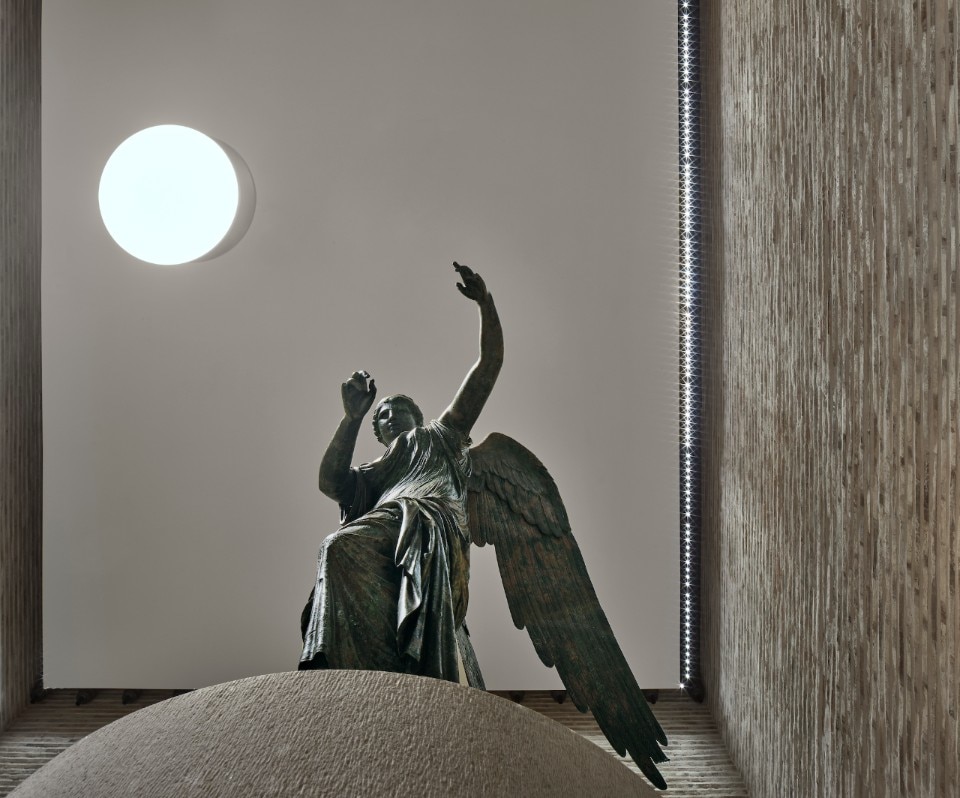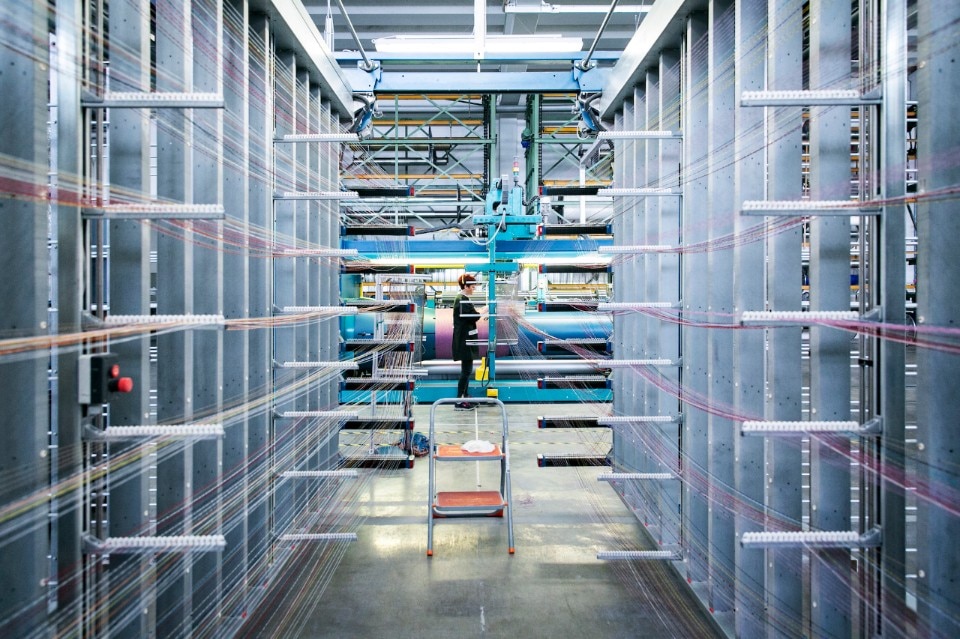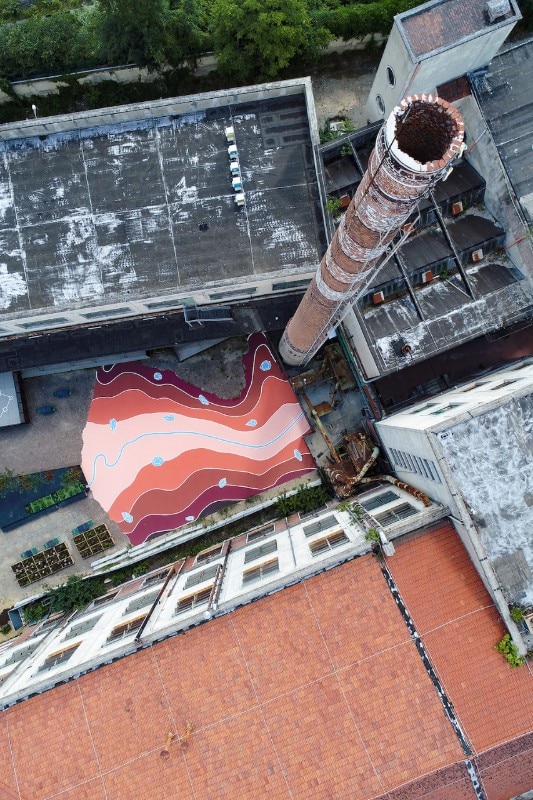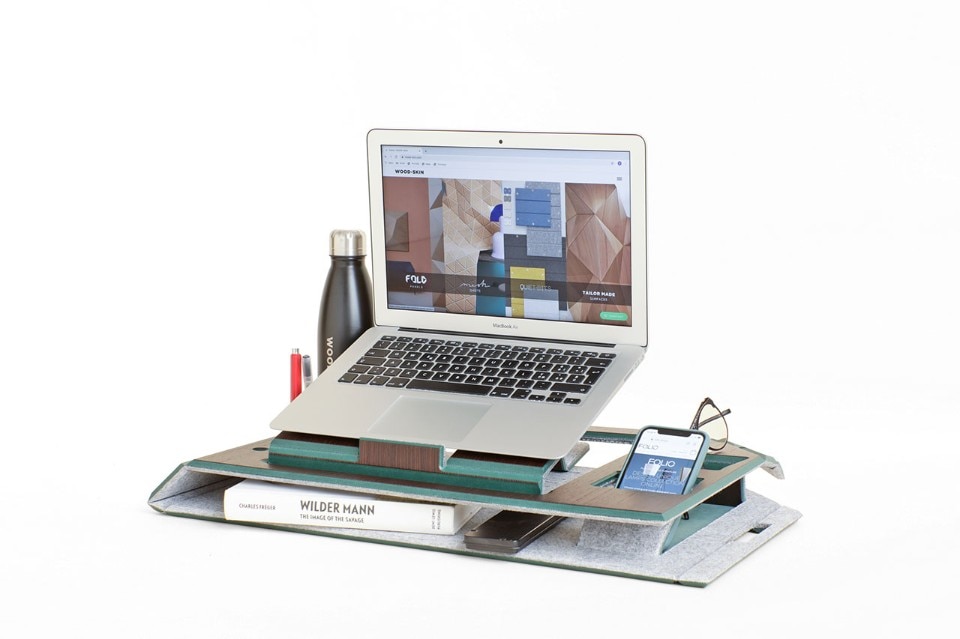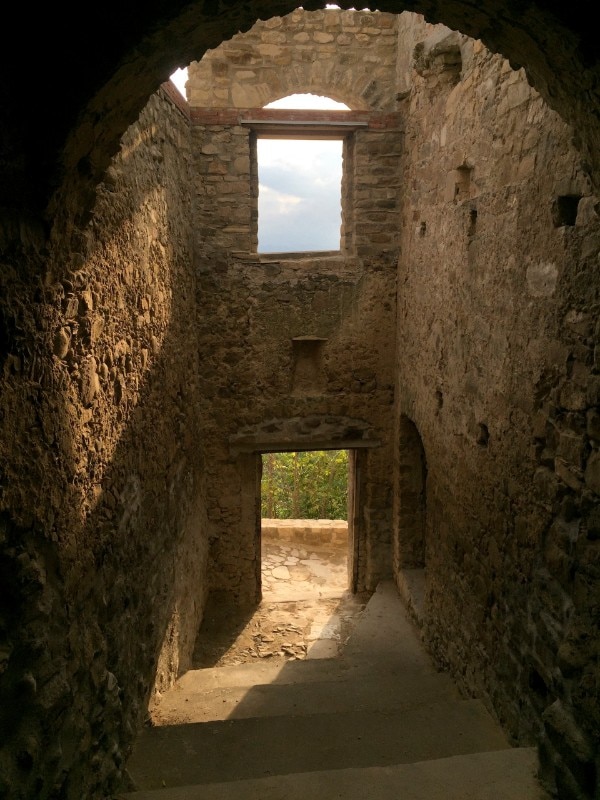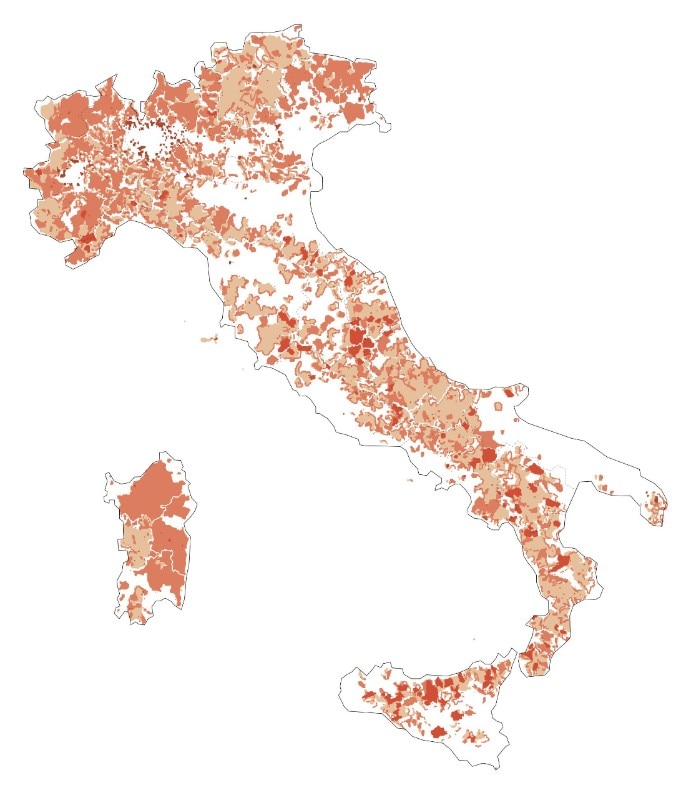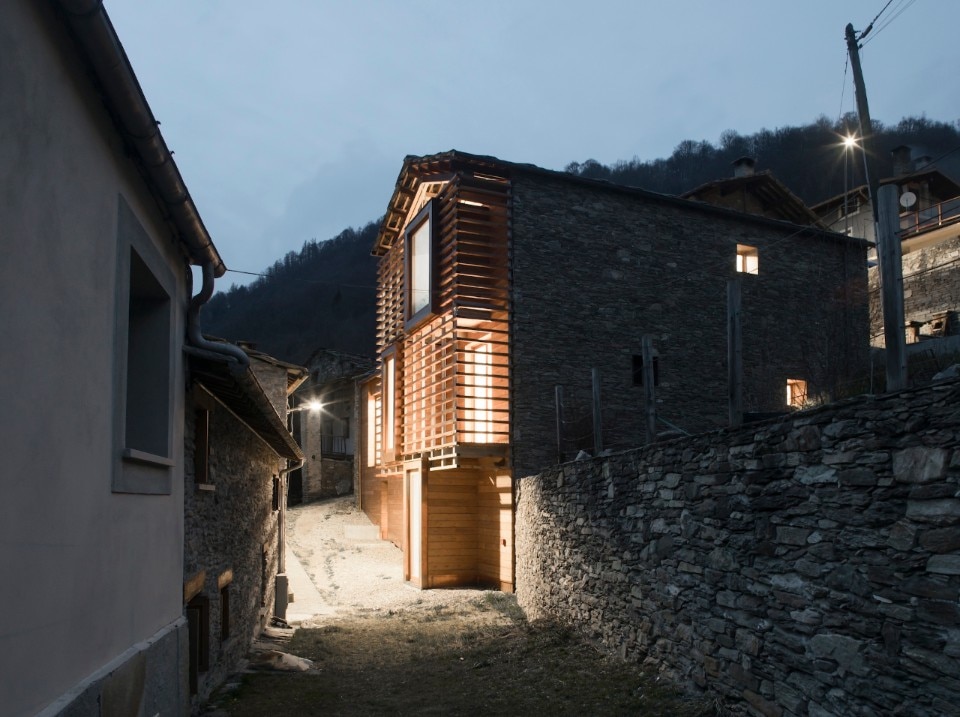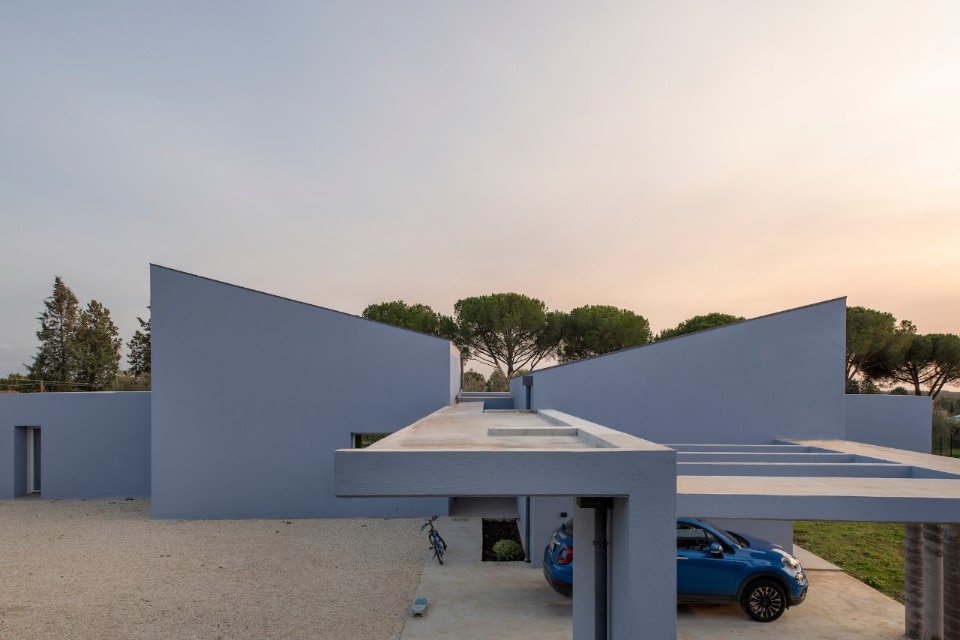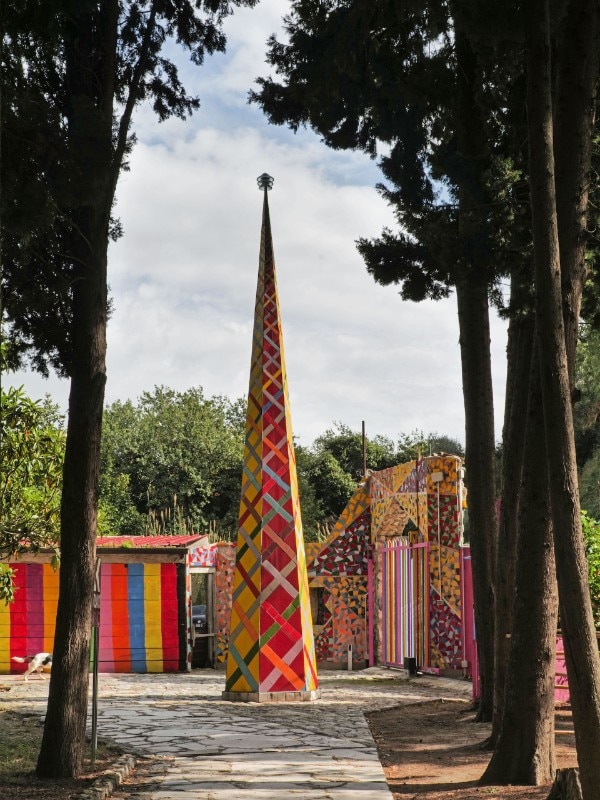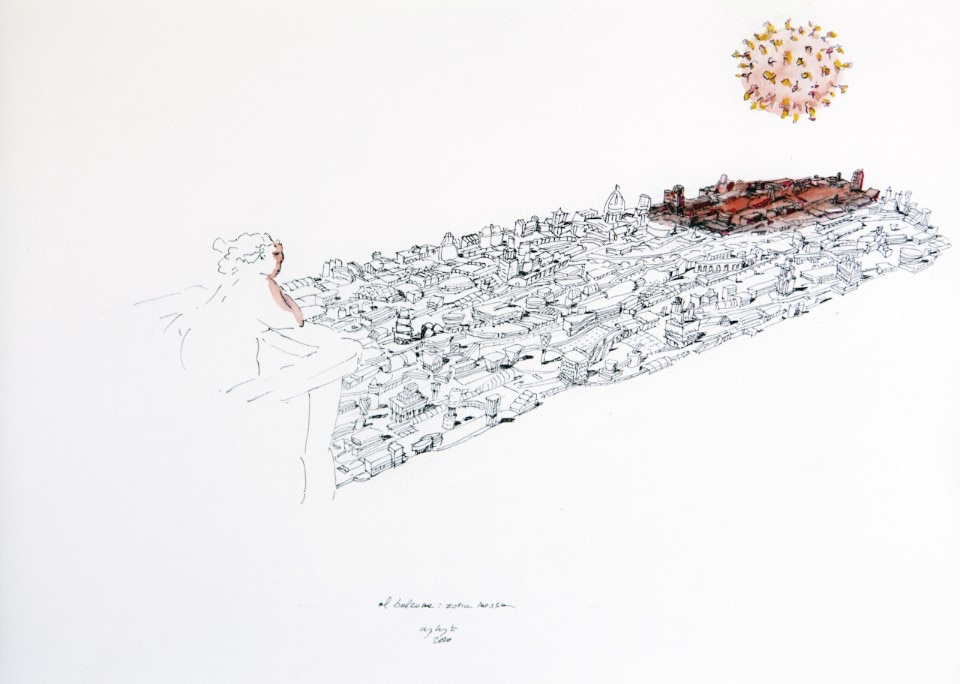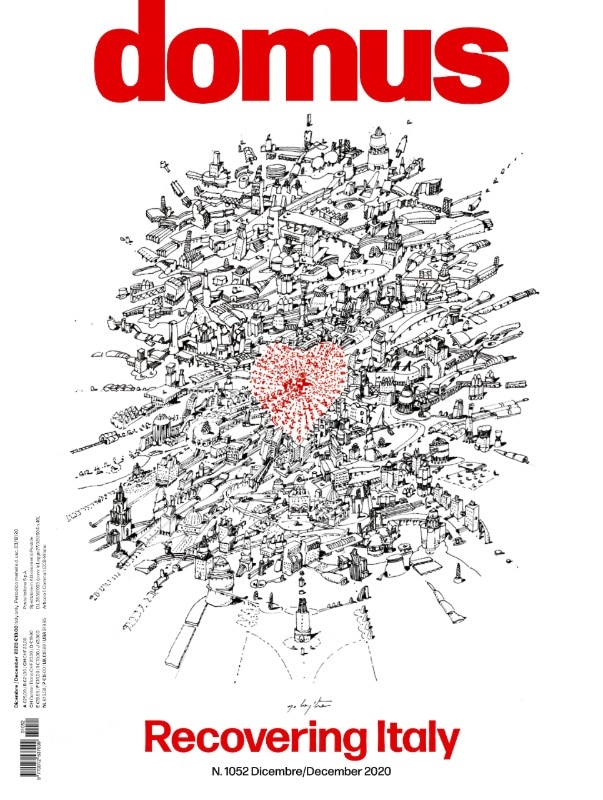Recovering Italy is the theme with which Domus has decided to close the year symbolically. The issue 1052 opens with a Preface by editorial director Walter Mariotti, for whom architecture aims to outline “a ‘place’ where the private initiative linked to the project, art and beauty is still the key to understand its own intimate nature and to look to the future”.
The Album section continues with a series of photographs collected in In The Light Of (You), a collective project conceived and coordinated by photographer and artist Giorgio Barrera. The photos depict two people with masks who meet in small and large public spaces, stop a few meters away, and then separate.
In the pages dedicated to Public space, Matteo Agnoletto reflects on how the anti-contamination measures, which appear antithetical to the usual frequentation of the space, have actually made their authentic value re-emerge. For Nina Bassoli the projects dedicated to a post-Covid-19 scenario can move in two directions: working on the long-distance, or working on the short one, with an uncertain attempt attitude. Giulia Ricci tells us about the new work by Edoardo Tresoldi on the promenade of Reggio Calabria, Opera, while Cristian Colli celebrates 150 years since the birth of Maria Montessori. The historian Sara Marini faces the urgency of architecture to reopen, to build new alliances with the world. We then describe two projects dedicated to Heritage: the Archaeological Museum of Castellammare di Stabia and the Vittoria Alata, a sculpture that with an installation by Juan Navarro Baldeweg finally returns to Brescia.
We continue with the Industry section, and Riccardo Gallo discusses how and when the Italian industry will recover the negative effects of this pandemic crisis and analyzes the impact on the production structure of two world crises: the oil crisis of 1973-1974 and the financial crisis of 2008-2009. Francesca Molteni analyzes the factories, places of production, the archaeology of the Twentieth century in a changing world, and the design of emergencies previously destined for marginal and remote experiences, which now invent new strategies of coexistence and social cohesion.
In Inland areas Franco Arminio, writing about the need to invest in countries, states that “a country where something moves must be connected with a country where nothing moves”. The urgency is to immediately open a large construction site to move “from the puddle-community to the stream-community”. Matteo Agnoletto and Leo Piraccini draw itineraries through maps, which highlight the small municipalities in the process of depopulation on Italian territory, which represent an opportunity for promotion, especially for these territories. For Antonio De Rossi and Laura Mascino, so that the internal areas do not become the umpteenth re-proposal of development focused on building, a radical cultural change is needed, and here there is very little to build. Pippo Ciorra writes about the architecture of the Roman suburbs of Lina Malfona, designed in collaboration with Petrini Architetti. Giulia Ricci tells how an early Christian church, in the historic village of Mammola, has become an open-air museum for Nik Spatari and Hiske Maas. Ugo la Pietra tells us the cover image of this issue, and how, during the first quarantine in Italy, he imagined through his drawings a society capable of finding a balance between architecture and nature, between globalization and genius loci.
With this month’s issue you will find attached a monograph dedicated to Tadao Ando, Domus new Guest Editor 2021, where the Pritzker Prize is celebrated by the words of important architects and other professional figures including Kenneth Frampton, David Chipperfield, Masao Furuyama, Giorgio Armani and Bono from U2. This is followed by a conversation between the Japanese architect and Walter Mariotti, and the description of some of the most important projects carried out by the studio: Bourse de Commerce, Paris; He Art Museum, Foshan; Penthouse in Manhattan III, New York City; Wrightwood 659, Chicago; Nakanoshima Children’s Book Forest, Osaka. Manolo de Giorgi proposes a review of the design objects designed by the master. Tadao Ando tells us about his approach to green design, convinced that there is no difference between designing a building or a forest, because both can positively influence the environment. To conclude, Salvator-John A. Liotta traces an emotional geography of the places that have influenced the new Guest Editor.


